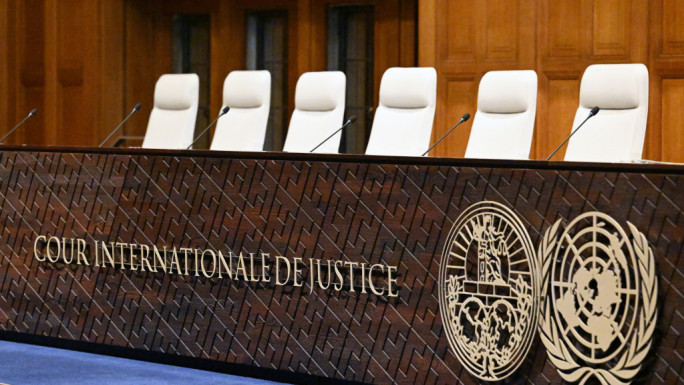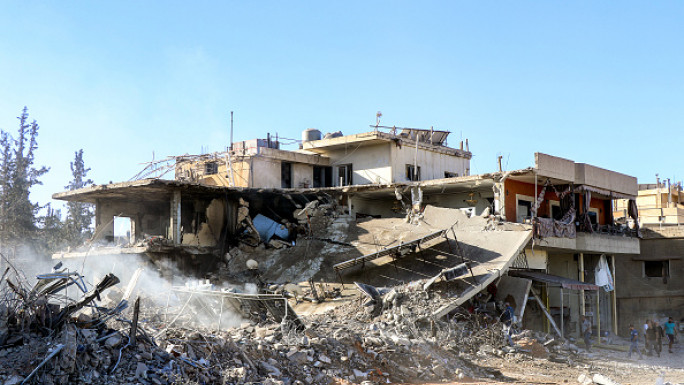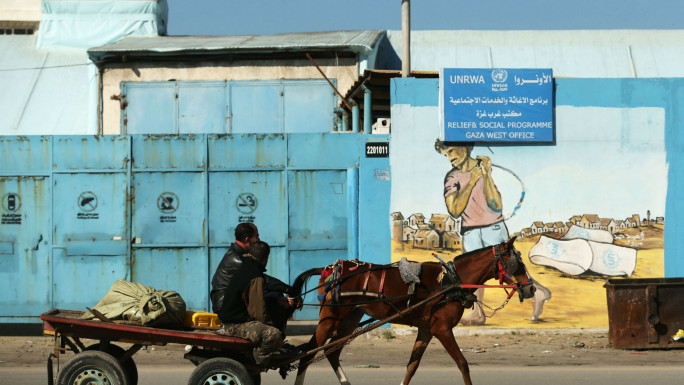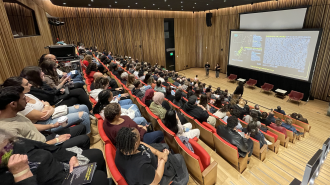
Surviving the Mediterranean: A closer look at the challenges faced by Egyptian migrants

In a recent UN report, Egyptians constituted the largest group of refugees and migrants reaching Italy in May of the previous year, comprising 22% of all arrivals.
The data raises questions about the motivations and experiences of these young Egyptians who embarked on such treacherous voyages in search of a new horizon.
Ali and Hussin's first-hand accounts, shared with The New Arab, shed light on the realities and challenges of these treacherous migrations in search of a better life.
"An elderly man had a two-litre water bottle remaining. He punctured its cap and told everyone to put a few drops on the tip of their tongue to moisten their throats and avoid dying of thirst. We also used the motor's water and distributed small portions to drink"
From Egypt to Libya
Hussin, from a middle-class family, faced financial setbacks and a failed project. Struggling with unemployment, an unstable income and no marriage prospects, he saw travelling to Italy as a solution.
As recommended by a friend, he asked for the family’s funds to book a ticket to Libya. Crossing the border with a visa, he completed customs procedures and handed the agreed amount to the contact person facilitating sea crossings.
For Ali, there were indicators of difficulty on his journey from the start. He was arrested by Egyptian authorities in El Salloum for six days, leaving his family unaware of his whereabouts. After his release, police officers collected money from him and his colleagues, reserving tickets to return them to Alexandria, and from there, each would go back to his hometown.
"My colleagues and I began to talk about why we shouldn't try our luck again. Maybe this time we will succeed in crossing the borders," Ali told The New Arab.
Unlike Hussein, Ali did not have an entry visa to Libya, and his journey was planned to be run across the borders.
Ali says, "We ran from 9:00 pm until 8:00 am, continuously running in the desert. I saw people falling behind, and we had no time to go back and help them, or else the guide would run away, and we would get lost in the darkness of the desert, or the border guard's bullets would reach us."
After six exhausting nights in a prison in El Salloum and another night of running in the desert, Ali finally reached Libya. However, he did not know that this was just the beginning.
Once Ali arrived in Libya, the smuggler informed him that he had to wait with another group in a crowded residential apartment. It seemed like this was done to gather more migrants and ensure that the coast was clear before they moved towards the boat. "Every day we were waiting and they would tell us that we were close to leaving, but I never realised that this waiting would last for four months," Ali added.
|
"I mostly stayed inside the apartment, afraid of arrest, abduction, or ransom demands. We had heard many stories about such incidents. To stay safe, I rarely ventured out and relied on money from my family for support," Ali added.
Hussein waited for over two months. One night, the smuggler informed them to prepare, and the next day, they were taken from a vehicle to another vehicle. Then, they walked on foot across the sand until they reached an abandoned farm.
They were asked to wait for a day or two, surrender their phones to avoid detection, and give their money, promising its return on the boat. More people joined. After three days, they were told to start walking following two guides leading us until they reached the sea.
They waited for hours, but the boat was stuck in the sand. "As we returned to the garage, we saw police cars nearby, so we ran back to the places we came from," Hussein said.
They made another attempt after waiting for a few days. That time, they waited for a week in the garage before the smugglers led them to the edge of a mountain. "They told us to descend in groups of four or five so that we wouldn't slide over each other. We waited for the 400 people to descend in this manner," Hussein said to The New Arab. Finally, the boat arrived, and the people lined up on the narrow shore between the sea and the mountain, ready to climb on board.
The Perilous Sea Journey
Ali brought bread and cheese for the journey when he left the residential house, expecting the sea trip to take about four or five days. However, he ended up waiting in the garage for another week before it began. Ali said, "The boat had around 600 people distributed on three floors. The places are only for sitting and do not accommodate sleeping. We slept in the cold and wind, and, of course, we had nothing to cover ourselves with because we had to move lightly."
On the third day of Hussein's journey, strong winds and high waves caused water to enter the aged boat. Passengers used buckets to scoop out the water for a day and a night. That day, the two captains and two assistants continuously worked to steer the boat and adjust the motor to face the waves, disregarding their usual 12-hour shifts.
Hussein said, "Because the boat had children and families on board, the Greek coast guard allowed us to stay close to the coast without entering Greece for 48 hours until the waves calmed down." As Hussein recounted, the coast guard did arrive after the waves calmed down, and accompanied them for two or three hours with their boats until they were far away from the Greek shores, then went back.
"When we arrived, we found out that they had been monitoring the movements of the boat and knew details about us, including the number of passengers. The preparations, teams, and cameras waiting on the shore indicated that. But strangely, they only acted when we reached the shore"
Just a few hours into the sixth day, the food began to run out, but Hussein said, "We thought it's not a problem as long as the captain told us we have at least two days left to reach our destination. However, we waited for a day and a half, and we were still at sea without any sign of getting closer. The boat's motor was starting to stop at times, but it kept running until the surprise came that we were going in circles for 36 hours. The compass was malfunctioning, and we only discovered it when it started working again. Then the motor stopped completely." At this point, the boat came to a halt, and they tried to call for help.
"We sent distress signals towards Italy, and they told us that we were in international waters, and they couldn't reach us. We sent another distress signal to Greece, and they informed us that they already helped us once and wouldn't come again," said Hussein.
At that point, drinking water had also run out. "An elderly man had a two-litre water bottle remaining. He punctured its cap and told everyone to put a few drops on the tip of their tongue to moisten their throats and avoid dying of thirst. We also used the motor's water, and distributed small portions to drink," Hussein said.
|
Finally, a boat stopped to help them, keeping a distance from the migrants' boat. They communicated through written messages to understand the problem. The assisting boat tried to throw them a rope, but it veered away.
One of the young men jumped into the water, retrieved the rope, and climbed back up to their boat. Then the other boat threw them the needed hose, to solve the motor leaking.
They requested water and were given two containers, but no more could be provided. The hose resolved the engine's problem, and it started moving towards Italy.
"After hours of moving, a plane flew at a low altitude and took pictures of us. We thought that the Italian coast guard would come to help us as soon as the plane conveyed the news. However, no one came, and by the evening of the ninth day, we started losing hope after running out of food and water, and our strength dwindled. But then we noticed lights ahead of us," said Hussein.
Eventually, they reached the coast, where they found rescue boats waiting for them on the shore. Hussein said, "When we arrived, we found out that they had been monitoring the movements of the boat and knew details about us, including the number of passengers. The preparations, teams, and cameras waiting on the shore indicated that. But strangely, they only acted when we reached the shore."
Reaching Italy
Hussin's journey cost 150,000 Egyptian pounds, which was approximately $7,000 at the time of his journey, as he entered Libya legally. On the other hand, Ali's journey, which was more challenging, cost around $2,000.
After their arrival, their fingerprints were taken, and they were taken to a camp where they received three meals a day, which was a relief compared to the hunger they had endured on the boat. For Ali, this happened at the beginning of the year 2022 when concerns about COVID-19 were still prevalent. He had to undergo a 25-day quarantine in a room with two others before being allowed to enter Italian cities.
Registering his name in the refugee building was also challenging for Ali; he had to sleep in front of the building for 10 consecutive days among large crowds.
Ali realised that he doesn't have the right to work or learn the language until he was given the approval for his residency as a refugee. Furthermore, these papers require periodic renewal for years before he can attain permanent residency, making it another long bureaucratic journey he hadn't accounted for.
"If I had known that it would be this harsh, I wouldn't have come. I haven't told my family what I've been through to spare them from worry and distress," Ali said, ending the conversation.
Shaimaa Elhadidy is an Egyptian investigative journalist and human rights defender based in Istanbul.
Follow her on Twitter: @salhadidy
![22,000 Egyptian migrants arrived to Europe via sea in 2022, the most of any nationality [Getty Images]](/sites/default/files/styles/medium_16_9/public/2023-08/GettyImages-1236737884.jpg?h=69f2b9d0&itok=8bZJIcNT)




 Follow the Middle East's top stories in English at The New Arab on Google News
Follow the Middle East's top stories in English at The New Arab on Google News


